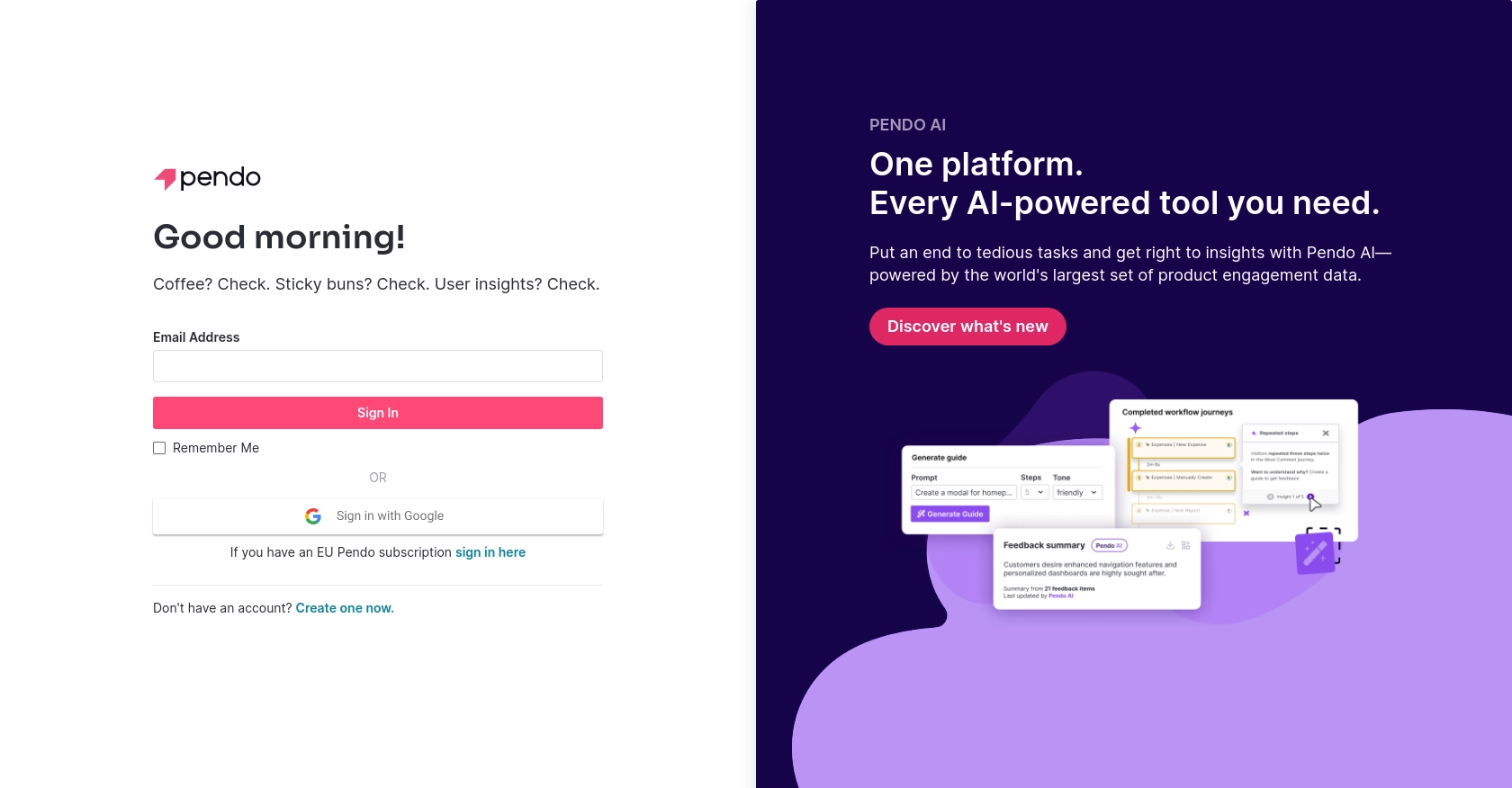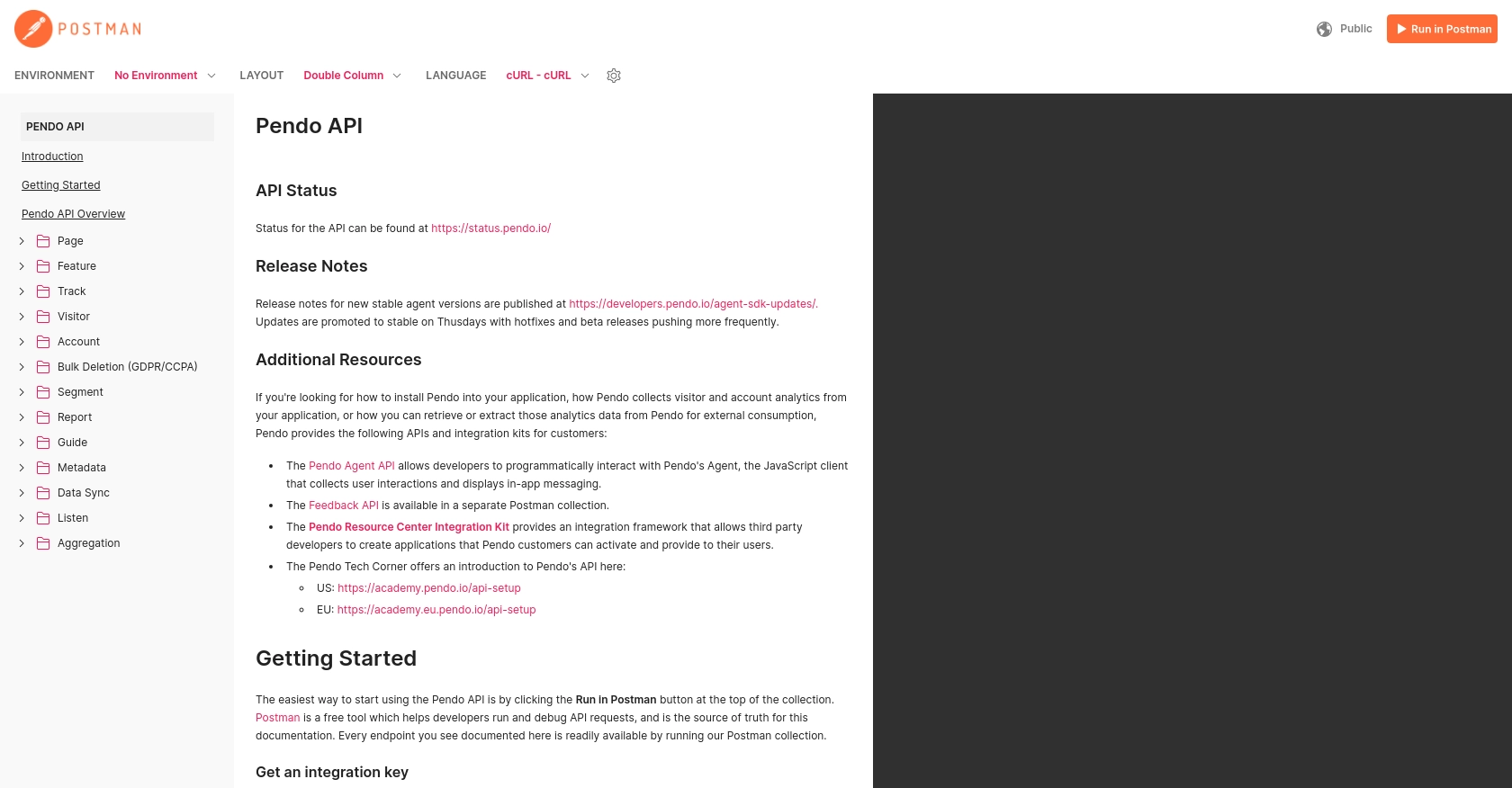Using the Pendo API to Get Page Accounts in Python

Introduction to Pendo
Pendo is a powerful product analytics and user feedback platform designed to help businesses understand and improve their user experience. By providing insights into user behavior and engagement, Pendo enables companies to make data-driven decisions to enhance their products and services.
Developers may want to integrate with Pendo's API to access detailed analytics and user feedback data. For example, retrieving page account information using the Pendo API in Python can help developers analyze user interactions on specific pages, allowing for targeted improvements and personalized user experiences.
Setting Up Your Pendo Test Account and API Key
Before you can start using the Pendo API to retrieve page account information, you'll need to set up a test account and obtain an API key. This will allow you to authenticate your requests and access Pendo's data.
Creating a Pendo Account
If you don't already have a Pendo account, you can sign up for a free trial on the Pendo website. Follow the instructions to create your account and log in. This will give you access to Pendo's platform and its API capabilities.
Generating Your Pendo API Key
Pendo uses an API key for authentication. Follow these steps to generate your API key:
- Log in to your Pendo account.
- Navigate to the Settings section in the top navigation bar.
- Under Integrations, find the API Keys option.
- Click on Create API Key and provide a name for your key to easily identify it later.
- Once created, copy the API key and store it securely, as you'll need it for authenticating your API requests.
With your API key ready, you can now proceed to make API calls to Pendo. For more detailed information on Pendo's API, visit their official documentation.

sbb-itb-96038d7
Making API Calls to Retrieve Pendo Page Accounts Using Python
To interact with the Pendo API and retrieve page account information, you'll need to use Python. This section will guide you through setting up your Python environment, making the necessary API calls, and handling responses effectively.
Setting Up Your Python Environment for Pendo API Integration
Before you begin, ensure you have Python installed on your machine. This tutorial uses Python 3.11.1. Additionally, you'll need the requests library to make HTTP requests. Install it using the following command:
pip install requestsWriting Python Code to Retrieve Pendo Page Accounts
With your environment set up, you can now write the Python code to interact with the Pendo API. Create a file named get_pendo_page_accounts.py and add the following code:
import requests
# Set the API endpoint and headers
endpoint = "https://engageapi.pendo.io/api/v1/pages"
headers = {
"Content-Type": "application/json",
"x-pendo-integration-key": "Your_API_Key"
}
# Make a GET request to the API
response = requests.get(endpoint, headers=headers)
# Check if the request was successful
if response.status_code == 200:
data = response.json()
# Loop through the page accounts and print their information
for page in data:
print(page)
else:
print(f"Failed to retrieve data: {response.status_code} - {response.text}")
Replace Your_API_Key with the API key you generated earlier. This code sends a GET request to the Pendo API to retrieve page account information. If the request is successful, it prints the details of each page account.
Running the Python Script and Verifying Results
Execute the script from your terminal or command line using the following command:
python get_pendo_page_accounts.pyIf successful, you should see the page account information printed in your terminal. Verify the data by cross-referencing it with your Pendo test account.
Handling Errors and Troubleshooting Pendo API Requests
It's crucial to handle potential errors when making API calls. The Pendo API may return various status codes indicating different issues. Here are some common error codes:
- 401 Unauthorized: Check if your API key is correct and has the necessary permissions.
- 404 Not Found: Ensure the endpoint URL is correct.
- 500 Internal Server Error: This indicates a problem on Pendo's end. Try again later.
For more detailed error handling, refer to the Pendo API documentation.
Conclusion and Best Practices for Using the Pendo API
Integrating with the Pendo API to retrieve page account information in Python can significantly enhance your ability to analyze user interactions and improve user experiences. By following the steps outlined in this guide, you can efficiently set up your environment, authenticate your requests, and handle API responses.
Best Practices for Secure and Efficient Pendo API Integration
- Secure API Key Storage: Always store your API keys securely, using environment variables or secure vaults, to prevent unauthorized access.
- Handle Rate Limiting: Be mindful of Pendo's rate limits to avoid throttling. Implement exponential backoff strategies to manage retries effectively.
- Data Transformation: Standardize and transform the retrieved data to fit your application's requirements, ensuring consistency across different data sources.
Streamlining Integrations with Endgrate
While integrating with Pendo's API can be straightforward, managing multiple integrations across various platforms can become complex and time-consuming. Endgrate offers a unified API solution that simplifies this process, allowing you to focus on your core product development.
With Endgrate, you can build once for each use case and leverage a single API endpoint to connect with multiple platforms, including Pendo. This not only saves time and resources but also provides an intuitive integration experience for your customers.
Explore how Endgrate can streamline your integration efforts by visiting Endgrate's website and discover how you can enhance your product's capabilities with ease.
Read More
Ready to get started?
